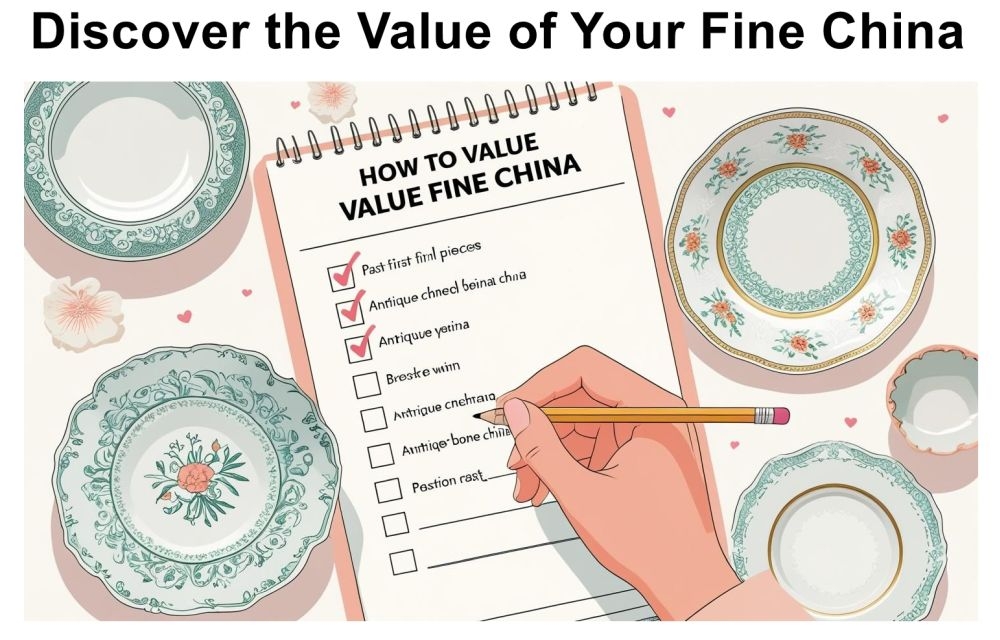Rosenthal no country of origin on the classic rose mark
by Ken
(Yorkshire Uk)

Rosenthal no country of origin on the classic rose mark
I sometimes go to a local tin pot auction.
It does not however only auction tin pots !
Occasionally among the very assorted flotsam and jetsam I discover an absolute gem. This article is not about such a gem. At least I don't think it is, but I stand to be corrected by the luminaries who inhabit this region of cyberspace.
The auctioneer has a habit, borne I suspect of years of having to take home a cornucopia of absolute junk after each sale, of attaching aforesaid junk to his more saleable items. Thus, while buying a Bavarian pewter stein I thought would look great full of beer, I ended up with another box full of "junk".
What I usually do, believing that one man's junk is another man's junk, sorry treasure, is to parcel up the - let's call them unwanted and unloved items - into a box and take them to my local charity shop.
Everyone's a winner, Auctioneer goes home cornucopia free, some starving child in Africa gets a few pence that saves her life, and I get a warm feeling as I drink copious quantities of beer out a beautiful pewter stein which, in turn, saves my life.
As I loaded up the box to take it to the charity shop, in went some rather decorative plates, six of them.
I hesitated.
I pictured them piled with freshly cooked bread rolls straight out of my oven, the perfect accompaniment to my home made soup. You will gather that I eat and drink a rather enjoyable albeit not always healthy diet.
However, a small alarm went off in my head at this point, I had fallen into this trap before.
I keep the plates because the look great with the bread, but they don't match the soup bowls. And if you have the first course sorted what about the main and sweet courses.
Soon, having been virtually given six side plates by an auctioneer who was clearly a hoarder straight out of therapy in some secure mental health unit, I was on the hunt for a rare and possibly expensive forty eight piece dinner service !
There is also the possibility that if I end up keeping the give aways from a hoarder straight of therapy, I might just end up going in his opposite direction.
There was one sure fire way of releasing myself from this "actually these plates are quite nice, perhaps I should keep them" trap, and that was to look at the mark on the back and hope.
If I am unlucky there is a Flight and Barr Worcester mark, or an early Derby mark and I'm sunk, I have to keep them.
But if I am lucky, there is a mark which I know nothing about, say some Chinese writing that while telling someone else this is five hundred years old and worth hundreds of thousands of pounds, tells me absolutely nothing.
Or, alternatively, some mark which I find a total turn off like made in India last week.
But luck has never been my strong suit.
On the back it said Rosenthal and some emblem or other which looked like roses.
I know of Rosenthal and being something I don't collect but is of some quality, I thought it was exactly the kind of thing the charity shop would be able to sell on behalf of the aforementioned African child.
Then disaster struck. Don't be concerned, for me, it is a monotonously regular occurrence. It didn't say Rosenthal Bavaria or Rosenthal Germany.
I had never seen Rosenthal - no country.
Clutching at straws, I was straight onto professor google only to find the plot thickened. In desperation I turned to you chaps and chapesses.
What is this design called, how old are these, and how comes there is no country ?
Ken
-------------------
Reply by Peter (admin)
Hi Ken
Lovely tale, well told. This double pair of roses or rose mark is a Rosenthal classic going back to 1919, and used also in more recent times where the origin label is not Bavaria or Selb, and is sometimes just Germany or even just 'Rosenthal Group'.
Like you I haven't seen one without the origin line at all. So I am as stumped as you.
The group has had various factories in various locations and all I can think is there is a class of rose marking without the origin tab which are rare but floating around the place.
The only clue to age therefore is after 1919 and then the look at the styling of the decoration.
My question would be to you - "what era does the decoration style look?"
Whatever your answer is indeed the likely age of the piece.
That is, of course, unless one of our knowledgeable magicians can come up with some and post a comment or two.
Regards
Peter

Inherited a china set?... Download my free 7-point checklist to instantly assess its potential value.
From the Studio
• Peter Holland Posters
• Sculpture Studio







